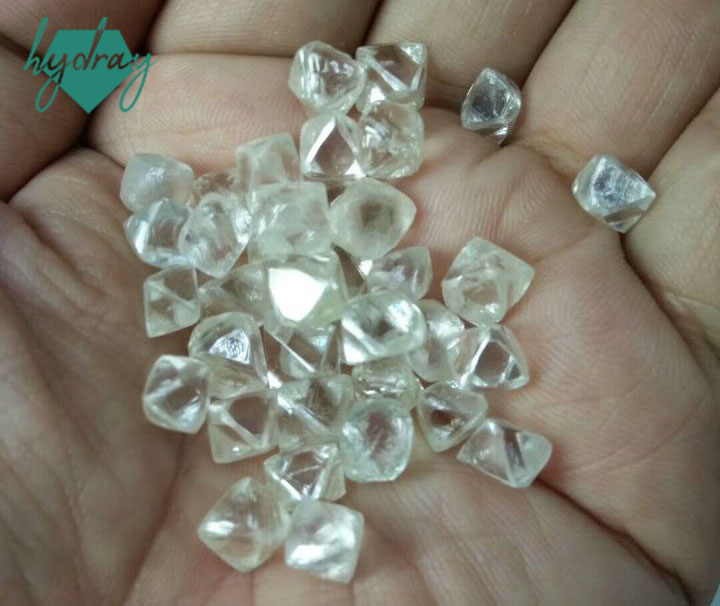For diamond cutting, the retention rate of raw uncut diamonds is more called “yield rate”, which is easy to understand. Roughly the ratio of “cut rough diamond weight” प्रति “rough diamond”. I read an article that said olive and heart cuts are low-yield cuts, which is a big misunderstanding and fallacy. The yield of each diamond is different. The difference is the quality of the blanks (including clarity and color) and the choice of the final design. आम तौर पर बोलना, one ton of diamond mines yields two grams of rough, two grams of rough diamonds, और उससे कम 30% of gem-quality diamonds. If it is a pink diamond, it may yield one in a million gem-quality diamonds. The rarity of diamonds ensures its status as the king of gems.
As cubic gemstones, rough crystals mostly appear as regular octahedrons and regular dodecahedrons. हालाँकि, nature is never as perfect as it is described in textbooks. So the crystal shapes of long octahedron and long dodecahedron appear. If naturally eroded, jagged teeth can appear on the crystal or the entire irregular crystal can be sawed off. इसके साथ ही, there are feldspar, flat stone, thread stone, blank stone with crystals, and flower stone with poor erosion, which are all “deformations” of standard crystals.

Research these diamonds uncut before cutting, consider their finished value, what clarity, what color, what shape suits them, and whether to use “cut diamonds” या “shape stones”. Take 1 carat lab grown diamond rough as an example. If the crystal is relatively standard, cut two 25-cent diamonds with a cut diamond, and you will get 50% of the diamond’s total, almost 50% of the yield. Note, not one 50 cents, but two 25 cents. हालाँकि, if the shape cut method is used, a 40-point diamond may be produced. The yield was 40%. When choosing a specific solution, the market value of the finished product should be considered. The above only considers the size, but also considers the clarity. If a 1 carat uncut diamond, 45 points can be rated as I, लेकिन 35 points of rough can be rated as VS, at this time, most of them will choose the 35-point plan, and it is a wise choice to reduce the yield rate. There is also the shape. If a rough lab grown diamond can produce a round diamond of 75-80 अंक, then changing the cut may produce a one-carat-shaped diamond, and the yield rate will also increase. In actual operation, these factors, as well as color, cutting risk, आदि।, should be considered comprehensively. Since the रफ सिंथेटिक डायमंड is not large, there is VG/G in the actual cutting, which may be due to the inexperience of the cutting master, or more likely to accommodate the imperfection of the rough and the size of the diamond. So this ratio is a very complicated issue, because each lab grown rough diamond is different, and the plan of the cutting master is also different. It can never be said that there is a high or low yield of a certain cut. If you want to calculate the retention rate of comprehensive rough diamonds, it is estimated to be around 30-40%. Going back to what I said earlier, a ton produces 2 ग्राम, 30% of the 2 grams are gemstones, तथा 0.6 grams of gemstones produce a 1 carat loose diamond.
Note that 1 carat here does not refer to a whole carat, it may be composed of N small diamonds.
